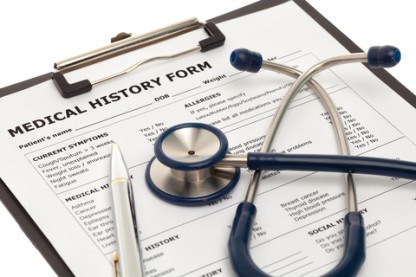5 Low Testosterone Symptoms You Should Know About
Many of the age-related difficulties men face are often just low testosterone symptoms. Find out what to look or and what to do about it.
 Most men understand that erectile dysfunction is associated with low testosterone; but what they often miss are the other common low testosterone symptoms. Without adequate levels of this sex hormone, males are likely to experience fatigue, muscle loss, fat gain, depression, low libido, and even osteoporosis. A man in his fifties and beyond may still be sexually active, but nevertheless be experiencing the beginnings of declining testosterone levels. An awareness of these low testosterone symptoms will allow that man to take action before erectile dysfunction, osteoporosis or other serious consequences result. Low testosterone can even increase your risk for Alzheimer’s disease and dementia.
Most men understand that erectile dysfunction is associated with low testosterone; but what they often miss are the other common low testosterone symptoms. Without adequate levels of this sex hormone, males are likely to experience fatigue, muscle loss, fat gain, depression, low libido, and even osteoporosis. A man in his fifties and beyond may still be sexually active, but nevertheless be experiencing the beginnings of declining testosterone levels. An awareness of these low testosterone symptoms will allow that man to take action before erectile dysfunction, osteoporosis or other serious consequences result. Low testosterone can even increase your risk for Alzheimer’s disease and dementia.
The earliest symptom of decreased testosterone levels
An increase in abdominal fat can be one of the first signs of low testosterone levels. If this fat goes away as a result of exercise, then it is most likely normal fat gain and testosterone is not the problem. However, if you cannot lose abdominal fat (and the stomach area is the only location where weight gain is developing) then low testosterone is almost certainly the cause. A study published in the International Journal of Obesity demonstrated that abdominal fat in older men was a direct result of low testosterone concentrations.[1] The study also found that the fat gain could be reversed by testosterone increase or supplementation.
Symptoms that will most strongly impact your daily life
The most noticeable and trifling symptoms of low testosterone include fatigue and a general decrease in motivation and mood. A 2013 study published in the Supportive Care in Cancer magazine found that some types of fatigue were significantly improved in men given testosterone treatment.[2,3]
The most dangerous low testosterone symptoms
Low testosterone can contribute to osteoporosis (loss of bone density). The National Institute of Arthritis and Musculoskeletal Diseases states that men with hypogonadism (low testosterone production from the testes) experience bone loss at a rate similar to that of women in menopause.[4] Fortunately, another study found that 65 year old men could increase their bone density through testosterone treatment.[5]
How to find out if you are at risk
Hormones can affect many parts of the body simultaneously, and in different ways. If you are experiencing a hormone deficiency such as low testosterone, you will likely suffer from a combination of symptoms. You can monitor your testosterone levels by having a doctor conduct a laboratory analysis of your blood. This is an outpatient test that can be ordered by a primary care physician. It requires a small vial of blood, and typically costs less than $100 without insurance. Our next article will provide recommendations for how to naturally increase your hormone concentration, and finally relieve your low testosterone symptoms.
[1] Int J. Obes. 1991 Nov;15(11):791-5.
[2] Supp Care in Cancer. 2013 Sept; (21)9:2599-2607.
[3] J Clin Endocr & Metab. 2000 Aug; 85(8).
[4] NIH Osteoporosis in Men. Accessed March 4, 2014.
[5] J Clin Endocrinol Metab. 1999 Jun;84(6):1966-72.
This article originally appeared in 2014 and has been updated.


 Ask the EN Experts March 2025
Ask the EN Experts March 2025  Vegan Diet Better Than Omnivore Diet for Cardiovascular Health
Vegan Diet Better Than Omnivore Diet for Cardiovascular Health 